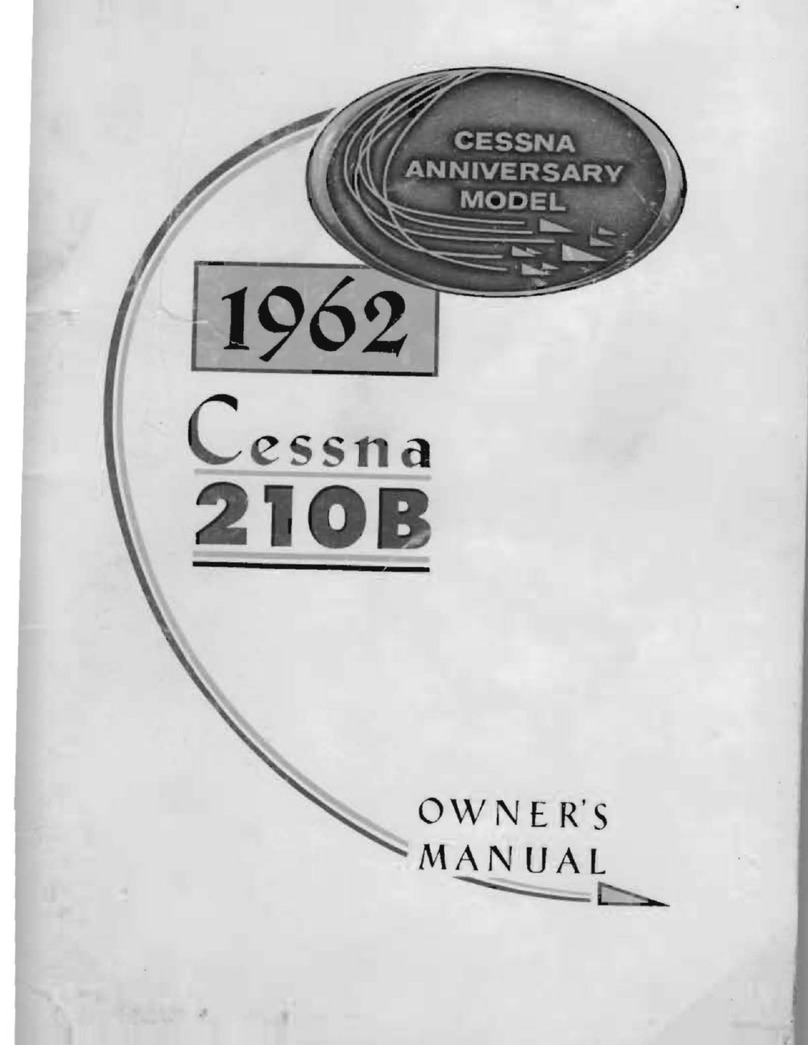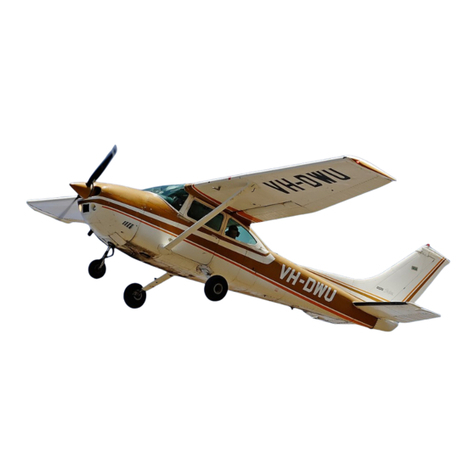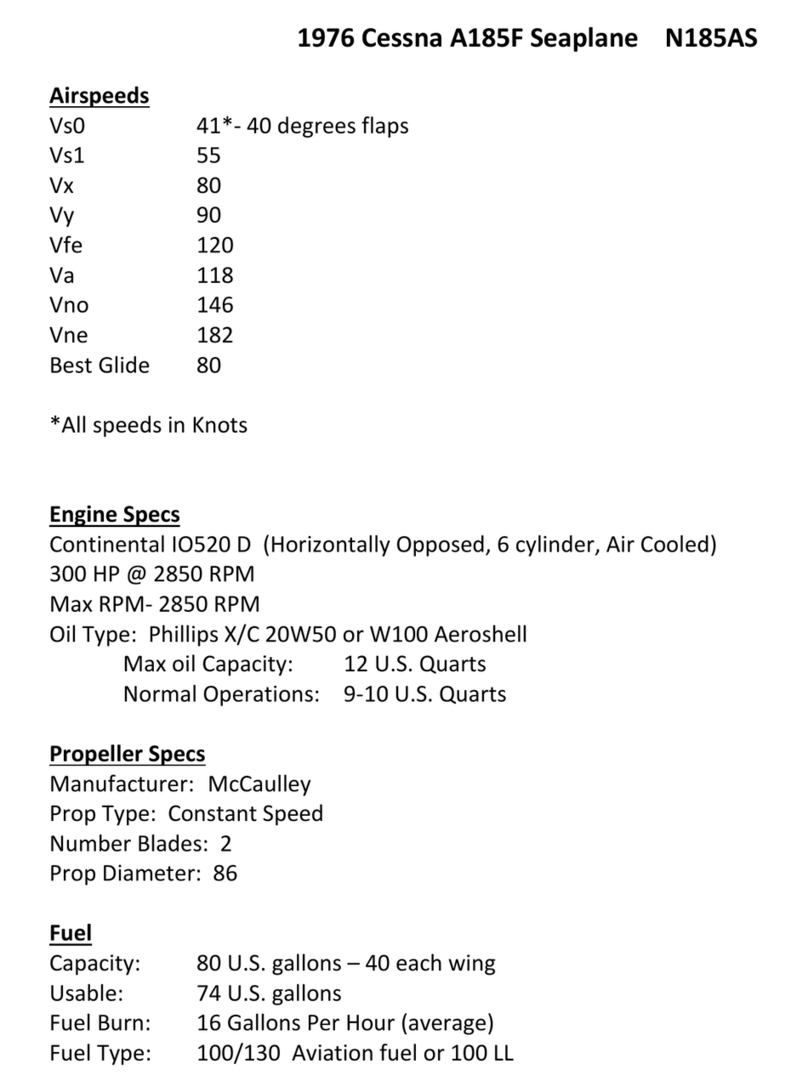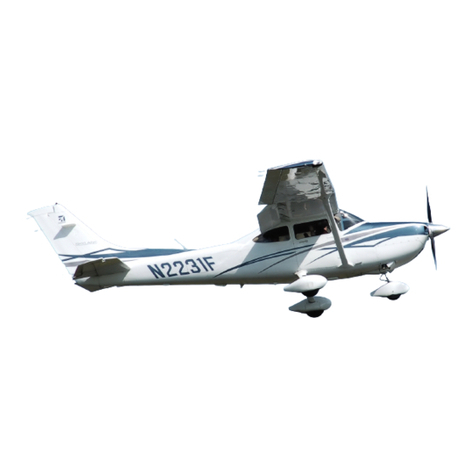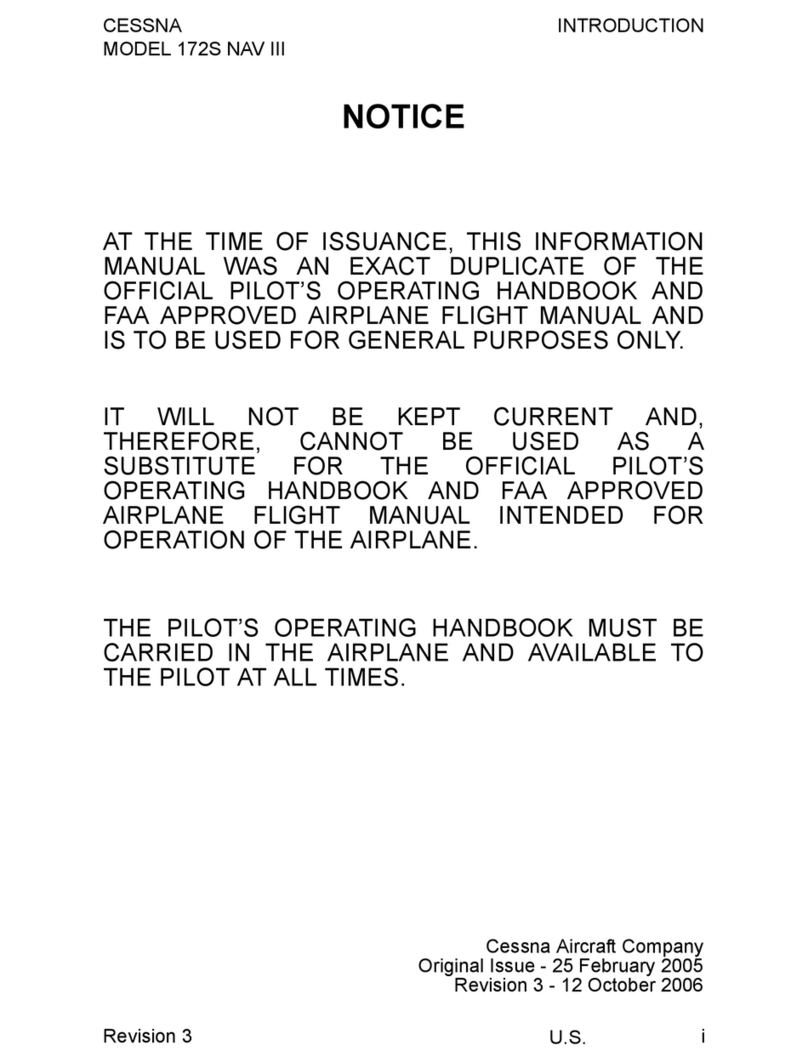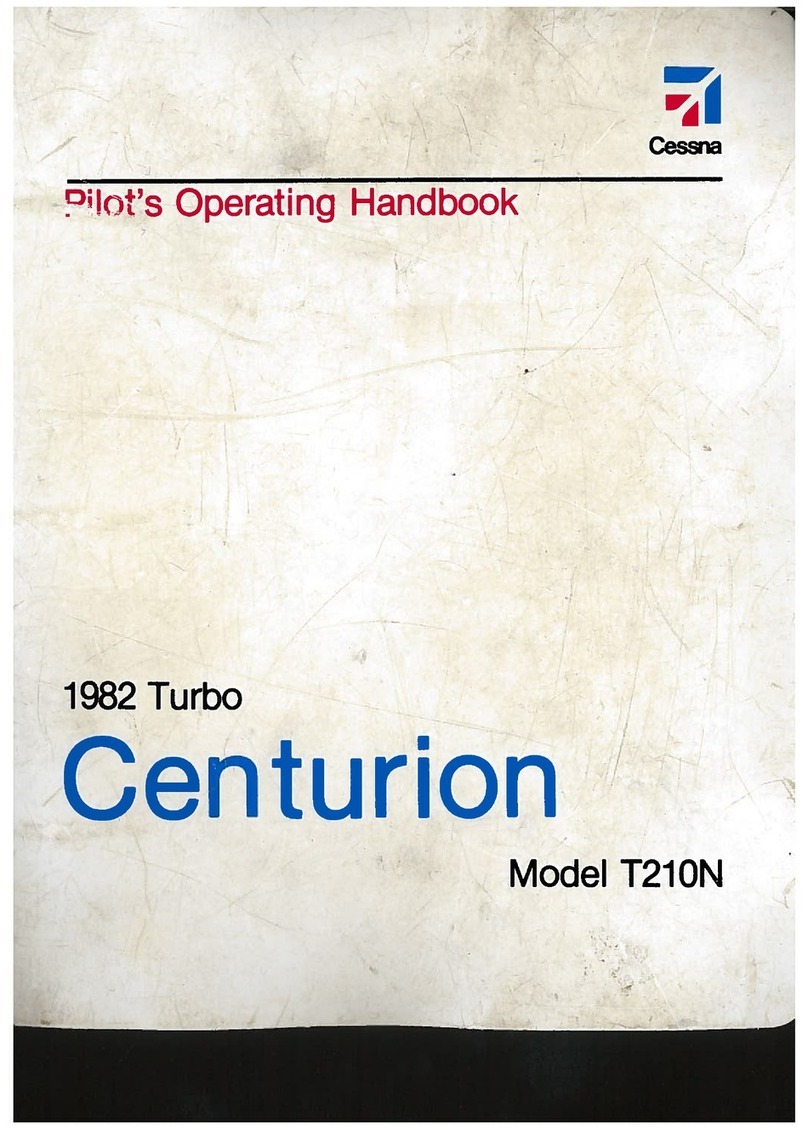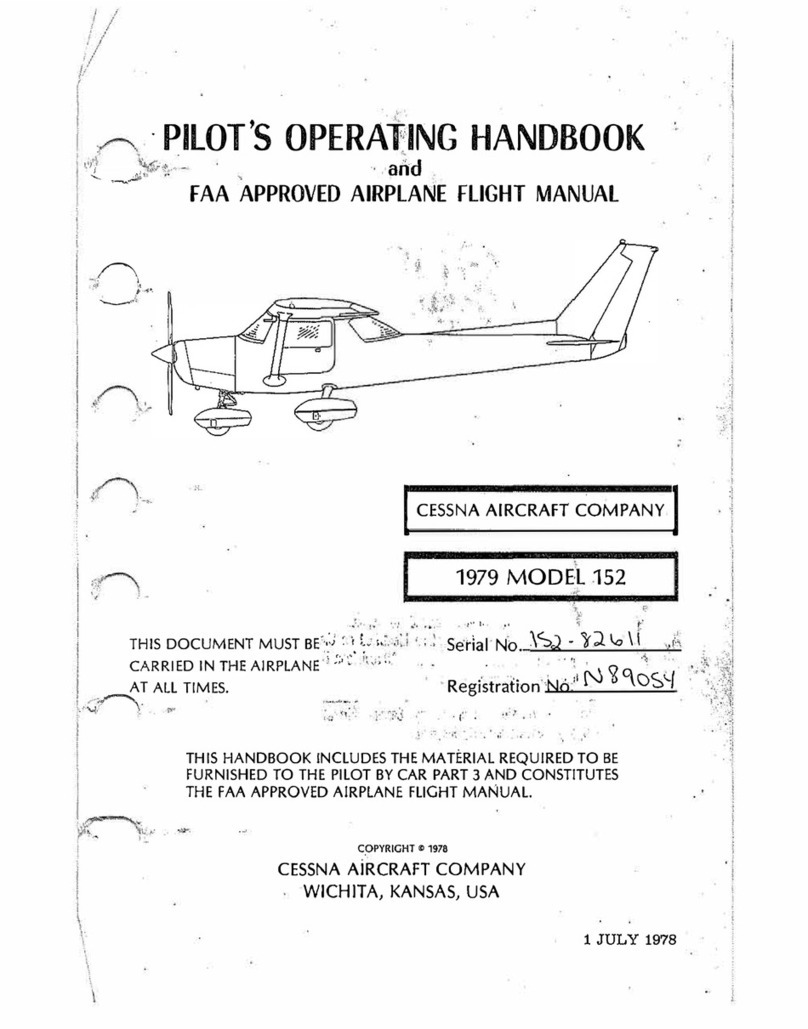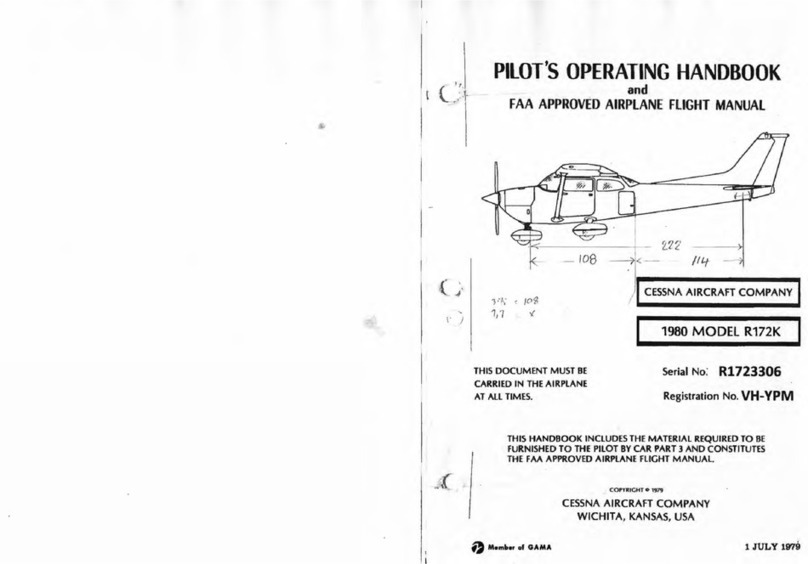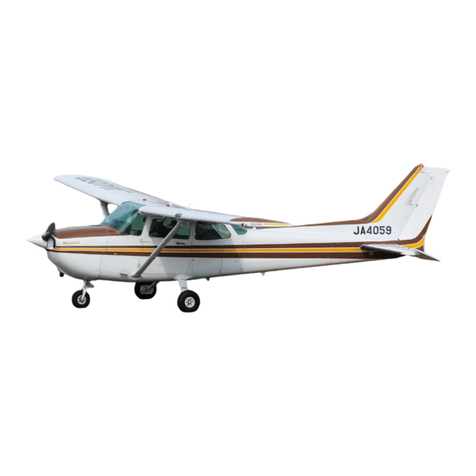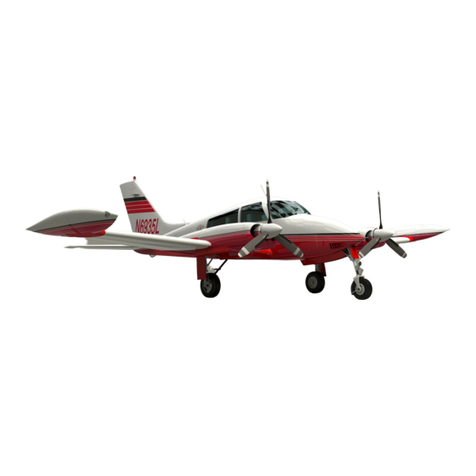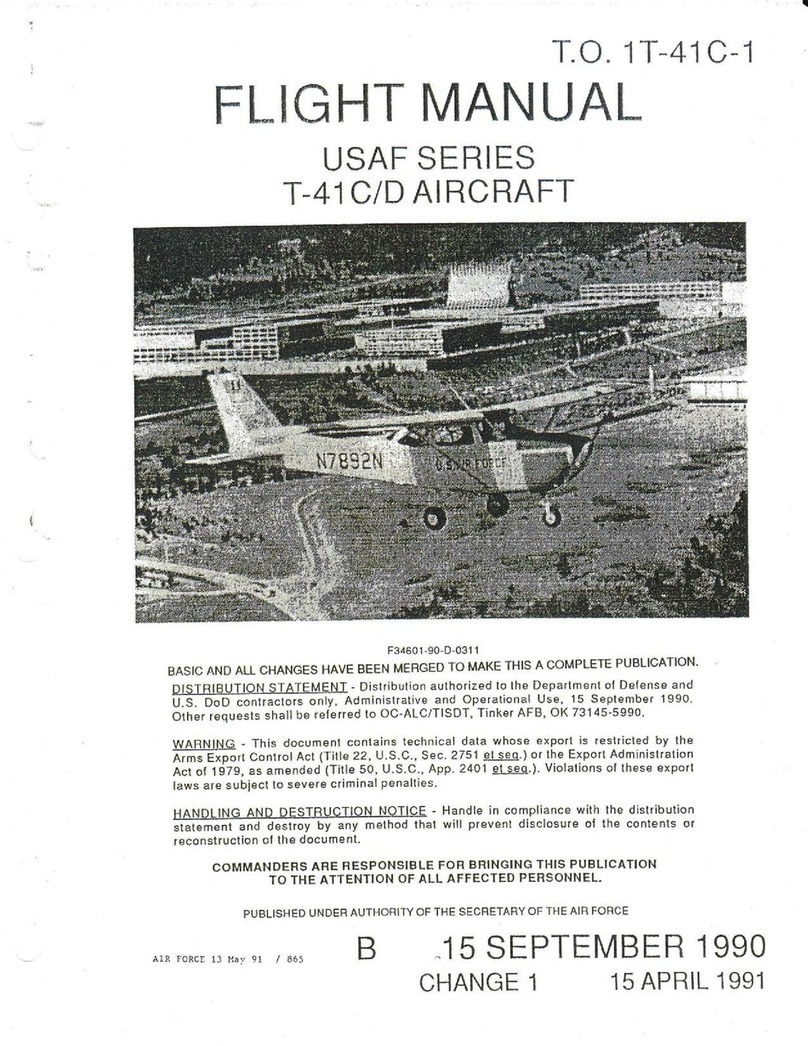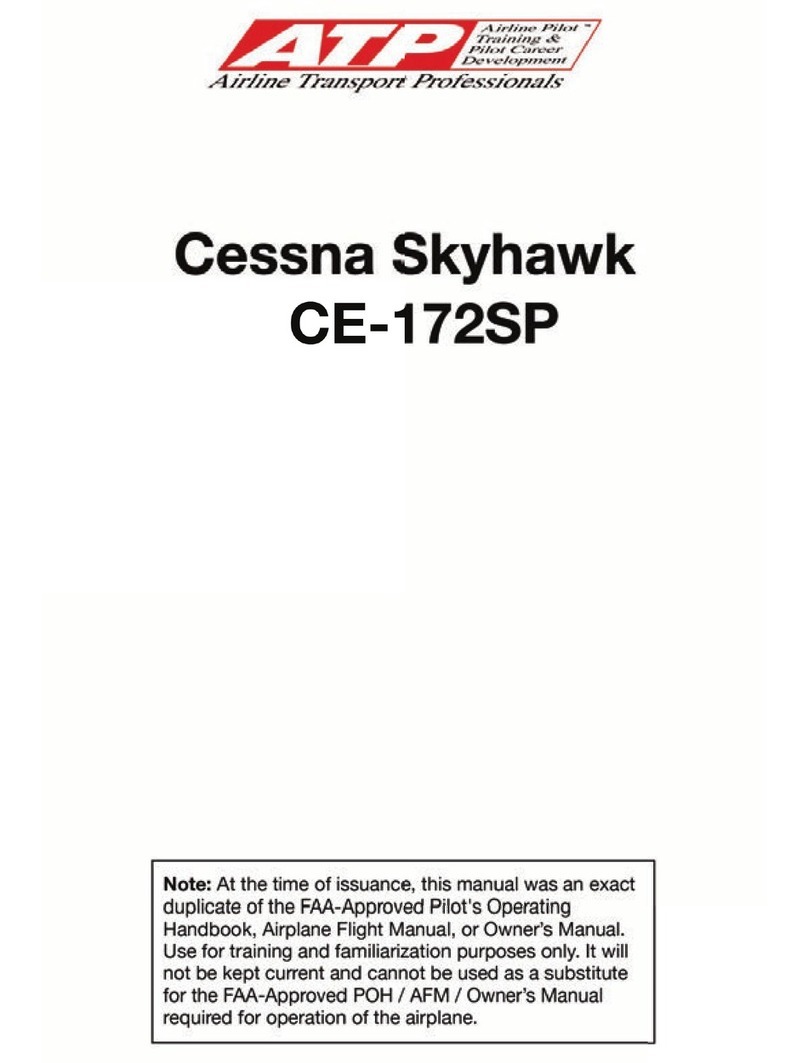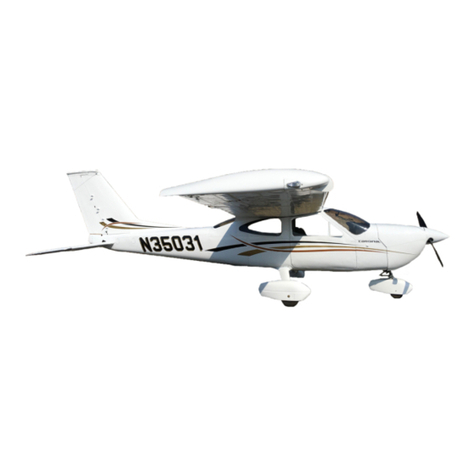
~
PLAINS
Supplemental Airplane Flight Manual
Cessna 172 R
FAA Approved STC SA2196CE
www
.airplains.
com
SECTION
2:
LIMITATIONS
AIRSPEED LIMITATIONS
VNE Never Exceed Speed ........
....
.....
..
...............
160
KCAS......163 KIAS
VNO Maximum Structural Cruising ..................
..
..126 KCAS...... 129 KIAS
VA
Maneuvering Speed
2550 Lbs
..
........
..
..
...
.
....
.
..
.
..
.
..
.
..
.
..
.......
..
.......1
02
KCAS..
..
..105 KIAS
2150 Lbs..........
..
..
..
.......................................95 KCAS
..
......98 KIAS
1900 Lbs
..
.....................................................88 KCAS........
90
KIAS
VFE Maximum Flap Extended Speed
1ooFlaps
..
..
..
....
..
.
..
..
..
......
..
..
........................107 KCAS
..
.
..
.
11
0 KIAS
10° to 30° Flaps.
..
................................
..
..
......
85
KCAS........85 KIAS
Maximum Window Open Speed..................
..
.......
..
.160 KCAS......163 KIAS
AIRSPEED INDICATOR MARKINGS
White Arc ................
...
.
..
.
..
.
..
.
..
.
..
.
..
.
..
.
..
..
..
.............................40 -85 KIAS
Green Arc .
..
.
..
.
..
......
..
..
.
..
.........
..
..
.
..
..........
..
.
..
.
..
.
..
........
..
.
...
.48 -129 KIAS
Yellow Arc ..............
..
..............
..
.
..
................
..
..............
..
...
129-
163 KIAS
Red Line ..
...
..
..
........
..
..............................................................163 KIAS
POWERPLANT LIMITATIONS
Engine Manufacturer: Textron Lycoming.
Engine Model Number: I0-360-L2A
Maximum Power: 180 BHP rating
Engine Operating Limits for Takeoff and Continuous Operations:
Maximum Engine Speed............
..
.
..
....
..
......................
..
..
.
..
..
..
2700 RPM
Note
The static RPM range at full throttle is 2250 -2400 RPM
Maximum Oil Temperature
...
.............
..
..................................245°F (118°C).
Oil Pressure, ........ Minimum .................................................20 PSI
Maximum ...............
..
.
..
..............
..
..
..
.
..
.....115 PSI
Fuel Grade: See Fuel Limitations.
Oil Grade (Specification): Mii-L-8082 Aviation Grade Straight Mineral Oil
Or Mii-L-22851 Ashless Dispersant Oil.
Propeller Manufacturer: McCauley Accessory Division.
Propeller Model: 1A170/CFA7660
Propeller Diameter: 76 inches.
Propeller Manufacturer: McCauley Accessory Division.
Propeller Model: 1A170/JFA7658
Propeller Diameter: 76 inches.
172059 1FAAAPPROVED
April
20
, 2004 Page 5
of
32


